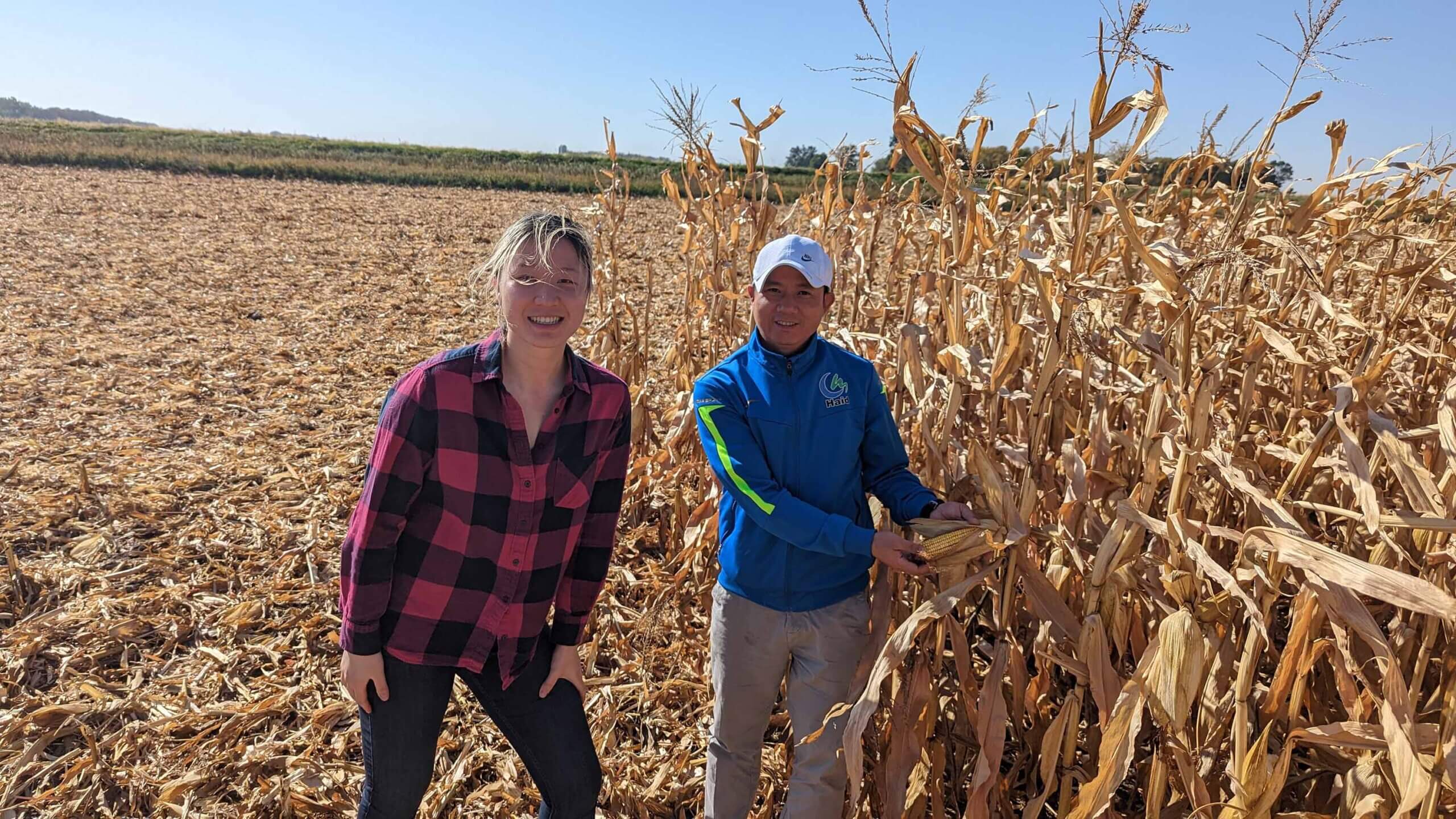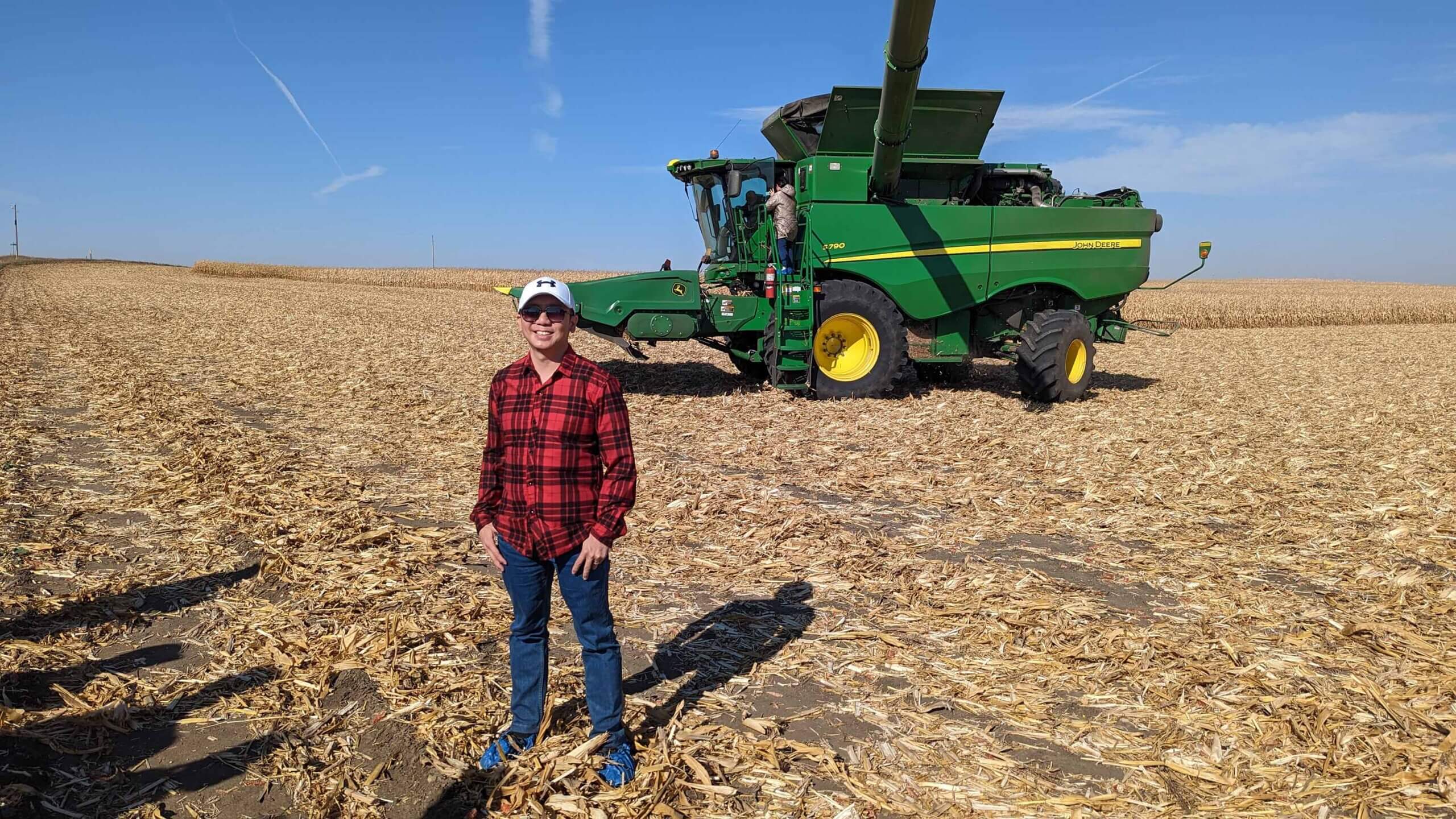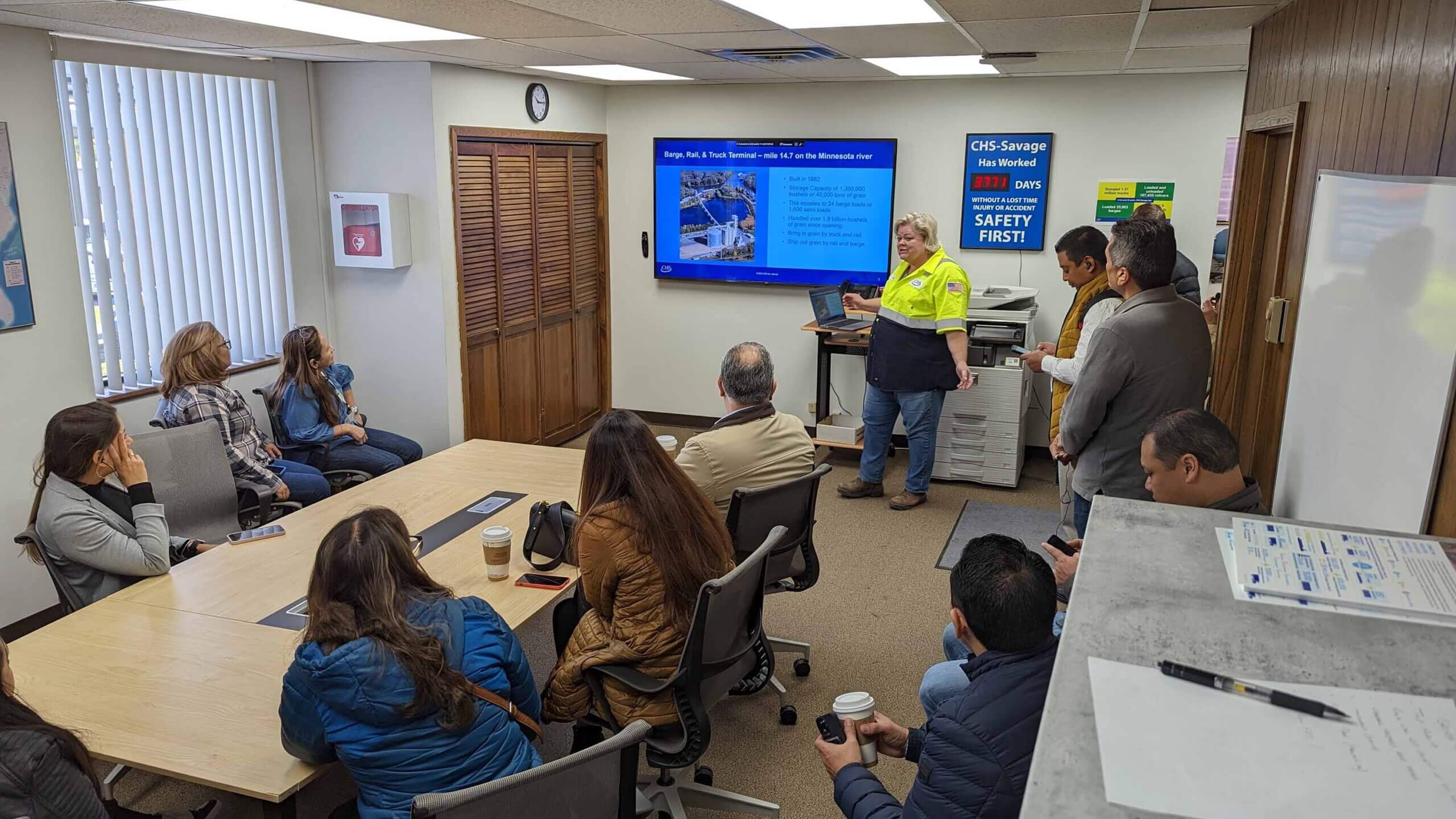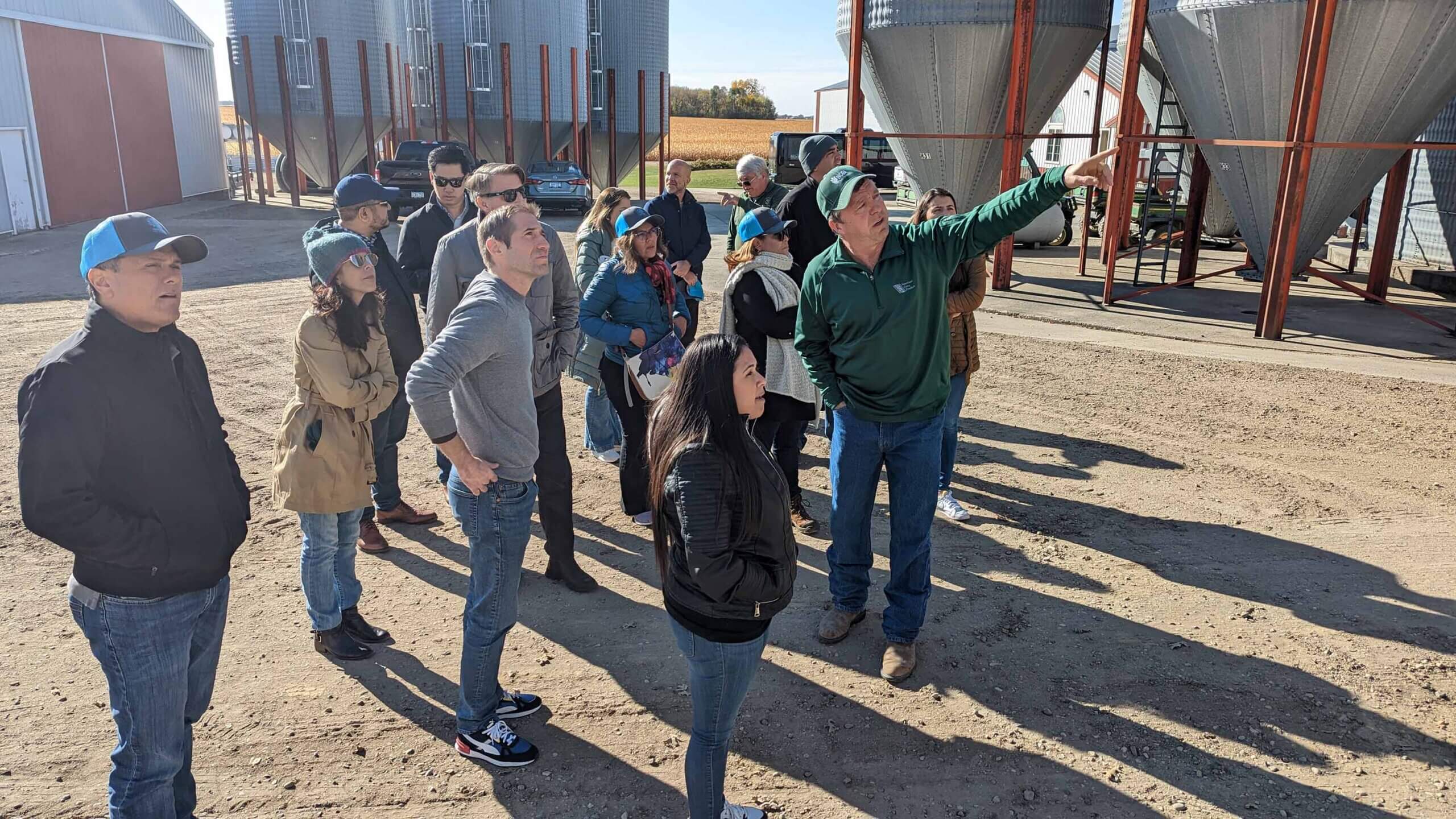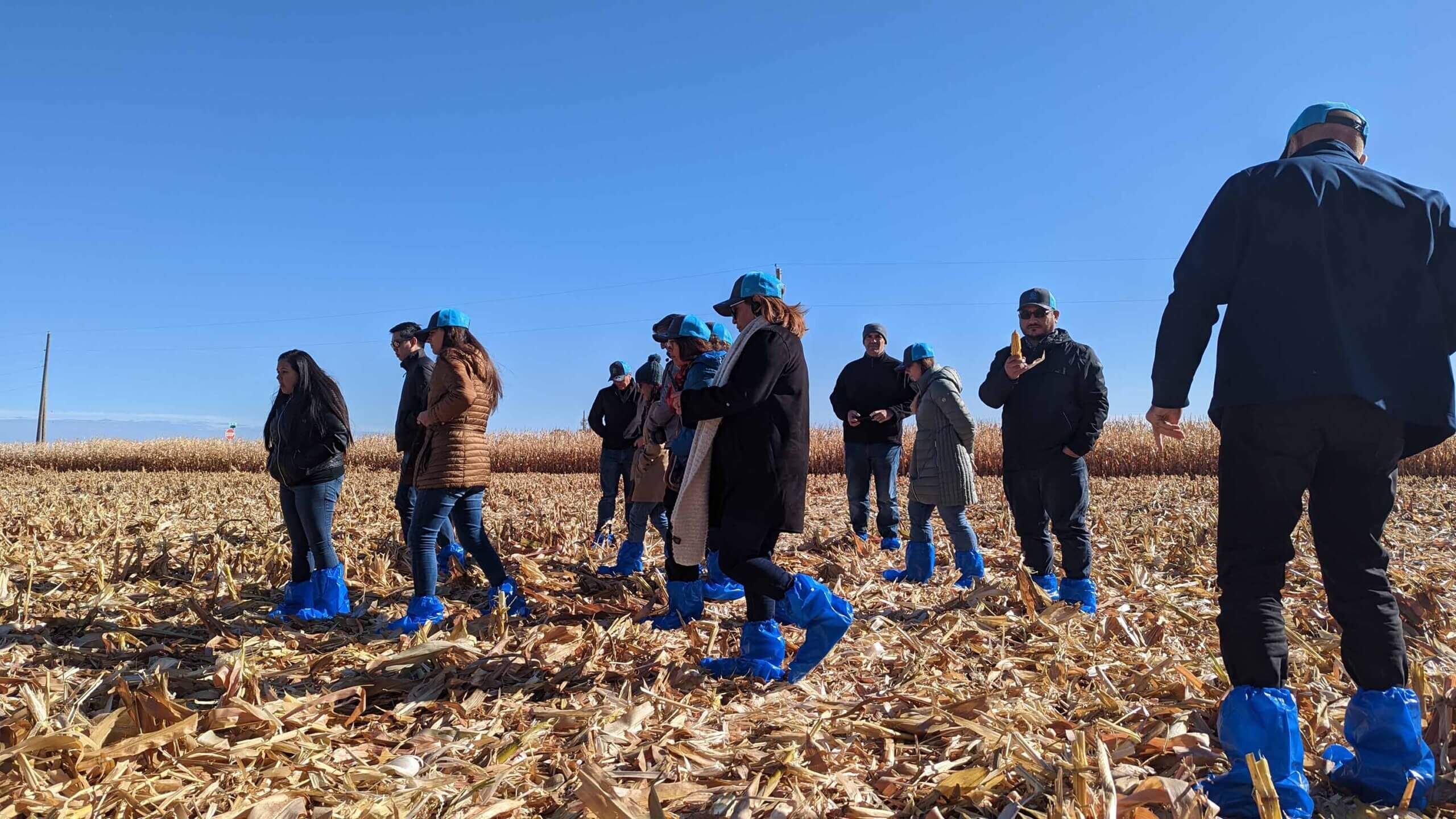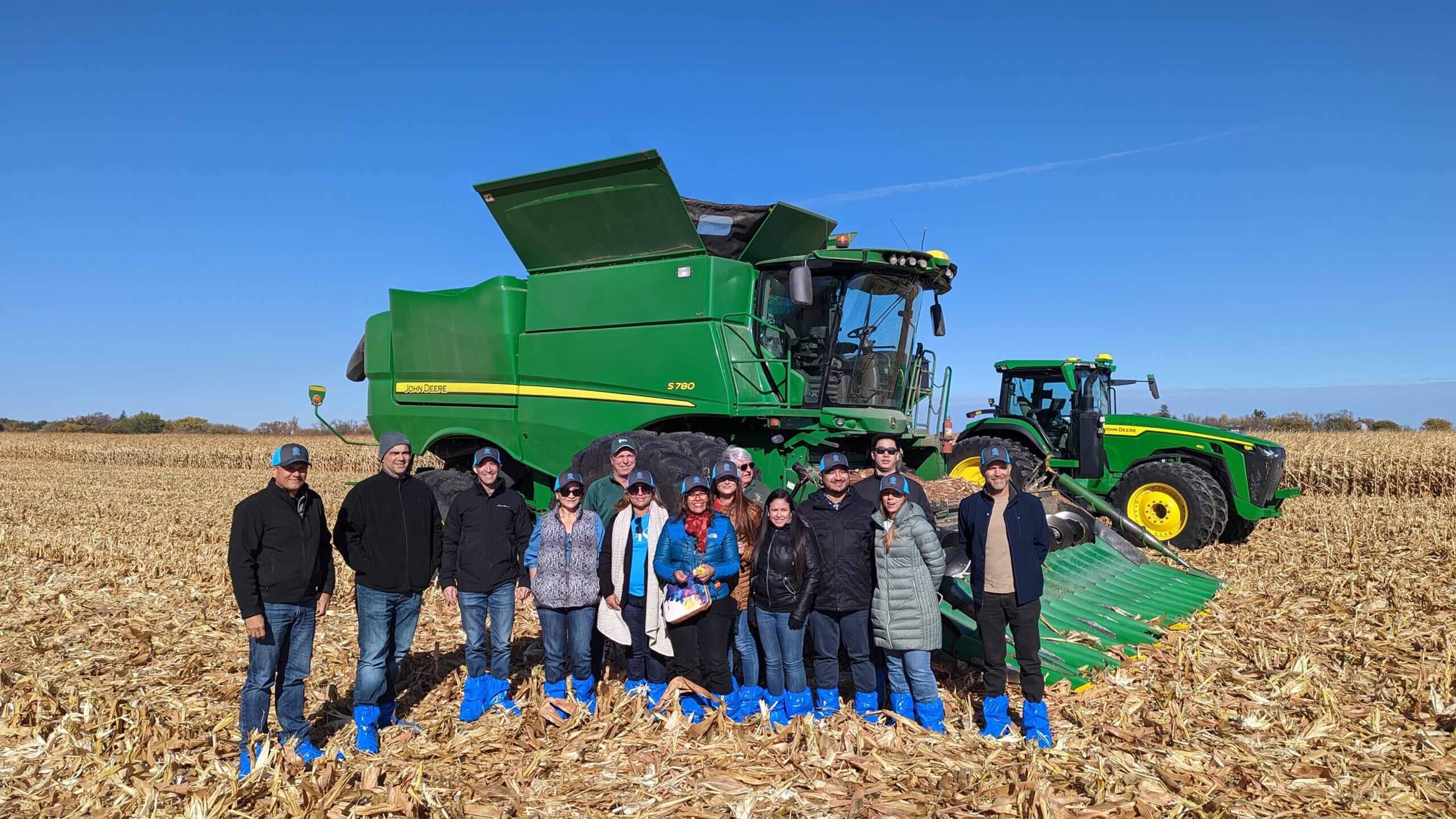 Reading Time: 3 minutes
Reading Time: 3 minutes
Written by Jonathan Eisenthal
Nearly 500 attendees representing 50 countries — many of them grain buyers from the fast-growing world markets — came to Minneapolis last week ready to buy American farm products during the four days of Export Exchange 2022. The event was hosted by the U.S. Grains Council (USGC), an organization dedicated to building and expanding international markets for American grains and their co-products, including ethanol.
As a member organization of USGC, Minnesota Corn is a major supporter of Export Exchange.
Chad Willis, a Willmar-area farmer and immediate past chairman of USGC, introduced speakers who offered the latest reports and insights into the current world grain and energy markets.
Willis emphasized the importance of exports to farmers like him. “I believe in our mission of developing markets, enabling trade, and improving lives. Ninety-five percent of potential customers and three-fourths of the world’s purchasing power are outside of the U.S.”
The council develops export markets for U.S. corn, sorghum, barley, and related products including distillers dried grains with solubles (DDGS) and ethanol. With a full-time presence in 28 locations, the council operates programs in more than 50 countries and the European Union.
Export Exchange offered informative programs, a trade show where regional service providers could connect with potential customers, and most importantly, plentiful free time for the attendees to network and lay the groundwork for export deals.
Minnesota Commissioner of Agriculture Thom Petersen echoed the importance of exports to the farmers, and therefore to the state of Minnesota, in a talk at the conference.
Exports and imports exchanged across a free-trade system make every country wealthier, including the U.S., according to Jason Hafemeister, acting deputy undersecretary for trade and foreign agricultural affairs at the U.S. Department of Agriculture.
He noted that 60% of U.S. agriculture sales go to Canada, Mexico, Japan, Korea, China, and the European Union.
‘Be careful with these markets’
“The lesson for us from the policy side is, be careful with these markets. Don’t screw it up,” Hafemeister said. “These are our best customers. They are hard to replace. The general story is marginal increases in each of these markets. These are wealthy countries. Developed countries. Populations are not expanding dramatically, incomes are not expanding dramatically, but there is continued demand growth in these countries that we are able to feed.”
Hafemeister noted how deeply farmers felt the loss of China’s consumption in 2018 and 2019, when the U.S. and China engaged in a trade war. Between 2001, when China signed on to the World Trade Organization, and now, China has grown into a $30 billion to $40 billion market for U.S. goods. That figure was slashed during the trade difficulties but is now coming back.
“The last thing we want to do is to raise tariffs, engage in a trade war,” he said.
Hafemeister pointed to the upside potential in the rest of the world. “(These are) countries that have growing populations, growing economies, growing demand. Many of them are in Asia. Many are tropical countries that don’t have a lot of land. They may not have a lot of water. They are not competitive producers of row crops, livestock, or temperate horticultural products.”
These countries are poised to buy increasing volumes of grains, animal products, and energy produced in the U.S.
“That is where (the USDA foreign) investment is,” Hafemeister said. “(We) are expending resources to help explain the virtues of U.S. agricultural products, find new customers, and expand our sales.”
USGC is perfectly placed to capture a large share in these emerging and growing markets, Willis said.
Bringing the world to Minnesota farms
Minnesota Corn has always taken seriously the need to invite global trading partners out to the farm to see how much care and attention Minnesota growers take to raise the best crop they can. Export Exchange presented an opportunity, and numerous growers volunteered.
Jordan Golbish hosted a delegation from China, Indonesia, and the Philippines. Jim O’Connor hosted two groups on separate days at his farm near Austin: buyers from Colombia came last Wednesday, and last Friday a group of fish farm producers from southeast Asia toured his farm. Aquaculture in southeast Asia has very strong demand for DDGS. Brian Thalmann hosted a delegation from Latin American countries to his farm in Plato.
O’Connor also gave a speech to the delegates at Export Exchange about the importance of the Minnesota corn check-off to Minnesota’s corn farmers. Not only does it fund research for new uses, but it also helps Minnesota farmers to reach out to new buyers with a message about the quality of their product.
Throughout the week, Minnesota ethanol plants also opened their doors. Delegations toured the Al-Corn Clean Fuel, Guardian Energy, and Heartland Corn Products ethanol plants, along with the CHS Savage Terminal and United Farmers Cooperative in Brownton, to get the complete picture of the U.S. grain supply chain.
The work of building international markets is a continuous job, vital to the ongoing prosperity of Minnesota’s farmers. Through its work with U.S. Grains Council, and many opportunities for state and federal trade missions, Minnesota Corn takes every opportunity it can to grow overseas markets. You can find out more here.


